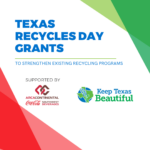What exactly is Household Hazardous Waste? The Environmental Protection Agency considers HHW to be “leftover household products that can catch fire, react, or explode under certain circumstances, or that are corrosive or toxic as household hazardous waste.” Products that may become HHW are often readily accessible and contain labels that read “DANGER”, “WARNING”, or “CAUTION”. Some examples of household products that may become HHW are:
- Cleaners
- Fluorescent light bulbs
- Fuels
- Mercury
- Paints
- Pesticides
- Pool chlorine and acid
- Wood stains or varnishes
In this blog, “4 Things to Know About Household Hazardous Waste”, we will explore HHW storage and disposal practices, how to locate HHW disposal facilities, and things to consider when purchasing certain household products
1. Properly Store HHW
Do NOT assume your garage or storage shed is the best place to store HHW. It is very important to carefully follow the suggested storage practices listed on a product label to avoid and prevent accidents. Additionally, make sure to keep hazardous products in their original packaging to help both yourself and others identify correct storage procedures.
2. Never Mix HHW in Other Containers
It is best to keep all hazardous products in their original containers. If you must transfer a product into another container, make sure the new container does NOT contain residual content and is clearly marked with a label and product information. Furthermore, do NOT transfer potential HHW into empty food containers, as it may be mistaken for food or drink.
3. Practice Source Reduction when Purchasing Potentially Hazardous Products
The more hazardous products you own, the more may need to be disposed of as HHW. Source reduction is a practice that reduces waste before it has the potential to enter the environment or damage public health. To practice source reduction, here are some questions to ask before purchasing certain products: Is there a less toxic alternative? Do you plan to use all of the product? Will the product be stored for long a period of time? Can leftover material be reused?
Although you may not be able to avoid purchasing certain products, doing a little research beforehand can help prevent HHW from piling up in your home. To help you identify greener products and services, we encourage you to visit the EPA website for more information.
4. Know your Options for HHW Disposal
It is important to understand that HHW disposal is a risk to human health and the environment. While some products, such as chlorine, may be sufficiently diluted and poured down the drain, this is not the case with other types of HHW. In some cases, empty containers can be disposed of through your local waste provider; however, pesticide and herbicide containers have specific recycling requirements.
Each local government or affiliated regional entity in Texas may have opportunities for HHW disposal. To view a list of HHW collection events by county, visit the TCEQ’s HHW webpage. You can also check with your local solid waste department.
If your county or region does not offer HHW collection services, we encourage you to get involved by reaching out to your local community, university, or school district.
Blog post written by Hector Lujan, Household Hazardous Waste Coordinator, External Relations Division, Texas Commission on Environmental Quality




